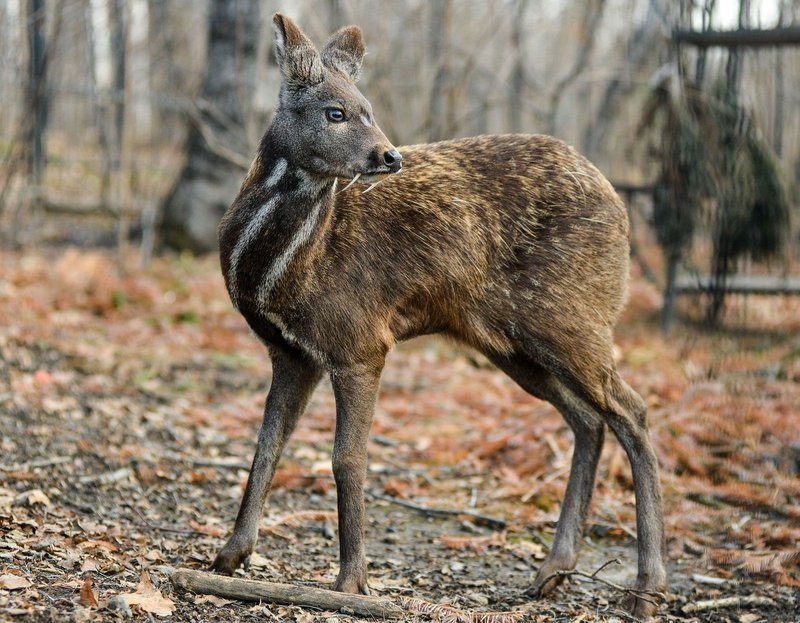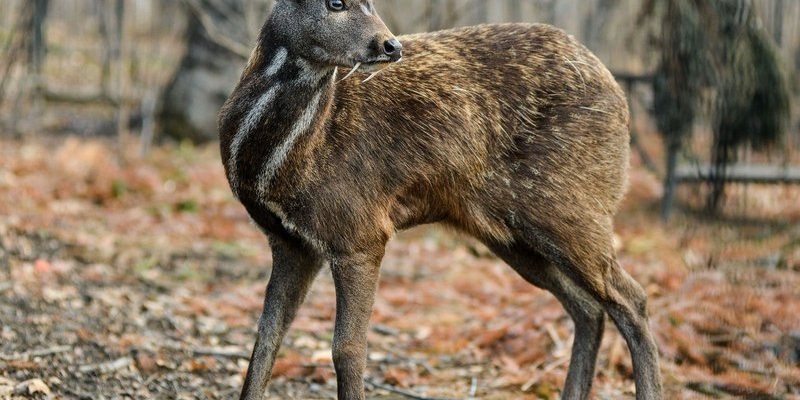
Musk deer don’t just hang out anywhere. They have specific needs in terms of climate, vegetation, and terrain. Learning about their preferred habitats helps us appreciate why they’re so special and also raises awareness about their conservation. As we sip our coffee and dive deeper, let’s explore the forests and mountains where musk deer thrive, and why their homes are crucial for their well-being.
What Are Musk Deer? A Quick Overview
Before we dive into where they live, let’s take a moment to understand what musk deer are. Unlike regular deer, which are part of the Cervidae family, musk deer belong to a different family called Moschidae. They are generally smaller, with males possessing tusk-like teeth and a distinctive musk gland used for attracting females and marking territory.
Musk deer have thick fur that helps them stay warm in their chilly habitats, usually sporting colors that blend with their surroundings. You might find them in shades of brown, gray, or even reddish tones. Their unique appearance makes them a sight to behold, yet, sadly, they are often hard to spot due to their elusive nature.
These little guys are mainly solitary animals, which means they like to roam alone rather than in herds. This behavior contributes to their survival in the wild, allowing them to be stealthy and avoid predators. So, where do these fascinating creatures actually live?
Natural Habitat of Musk Deer
Musk deer have a preference for cool, mountainous regions. You’ll typically find them in the steep, rugged terrains of Asia. They thrive in areas with dense forests, which offer cover and a variety of food sources. These forests are often made up of coniferous trees, shrubs, and undergrowth that provides both shelter and sustenance.
In terms of altitude, musk deer can be found at elevations ranging from about 1,000 to 4,500 meters (3,300 to 14,800 feet) above sea level. To visualize this, imagine climbing a steep mountain where the air gets thinner and colder. That’s where these deer feel most at home!
The habitats they prefer are not just about trees; they also need access to water sources, like streams or rivers. These areas are essential for their hydration and the vegetation they consume. Overall, musk deer are perfectly adapted to their natural habitats, but changes in these environments can greatly impact their survival.
Geographic Distribution of Musk Deer
You might be surprised to learn that musk deer are found across several countries in Asia. Their range includes regions like the Himalayas, parts of China, Mongolia, and even some areas of Siberia. Each of these locations offers different but suitable environments for musk deer to thrive.
Generally, there are four main species of musk deer, and they can be found in different parts of this expansive region. For instance, the Siberian musk deer is primarily found in eastern Siberia, while the black musk deer is located in the mountainous regions of Nepal and Bhutan.
Here’s a quick overview of some key regions with musk deer populations:
- Himalayan Range: This area is home to several musk deer species, especially the Himalayan musk deer.
- Chinese Mountains: Regions such as Sichuan and Yunnan have significant populations of musk deer.
- Mongolian Forests: Musk deer can be spotted in the forested areas of northern Mongolia.
- Siberia: The Siberian musk deer thrives in the cold forests of this vast region.
This broad distribution means that musk deer face different challenges depending on where they live. As their habitats become fragmented due to human activity, understanding their geographic range becomes even more crucial.
Climate Preferences of Musk Deer
Musk deer are creatures of the cold, preferring climates that are chilly and often damp. They thrive in regions where the temperatures can drop significantly, especially during winter months. These deer are well-adapted to survive in harsh weather conditions due to their thick fur, which insulates them against the cold.
In snowy environments, musk deer can often be spotted foraging for food beneath the snow. They have an incredible sense of smell, which helps them locate plants buried under the white blanket. Here’s the thing—this ability to adapt to extreme climates is part of what makes musk deer so fascinating.
In summer months, their habitats may shift a bit. They often migrate to higher elevations where the vegetation is lush and abundant. This changing of locations allows them to take advantage of the seasonal availability of food, demonstrating their adaptability to both climate and environment.
Threats to Musk Deer Habitats
Despite their resilience, musk deer face several threats that impact their habitats and distribution. One significant issue is deforestation, which leads to the loss of critical cover and food sources. When forests are cut down for logging, agriculture, or urban development, musk deer lose their homes.
Another major threat is poaching, primarily driven by the demand for musk, which is used in traditional medicine and perfumes. This illegal hunting not only reduces deer populations but also alters their natural habitats as they are pushed further into the mountains.
Climate change poses an additional risk. As temperatures shift and weather patterns become more unpredictable, the delicate ecosystems that support musk deer are in danger. Changes in plant growth cycles can lead to food shortages, while altered precipitation patterns can affect their water sources.
Conservation Efforts for Musk Deer
There’s good news, though! Various conservation efforts are underway to protect musk deer and their habitats. Organizations and governments are working to create wildlife reserves and parks that ensure safe spaces for these deer to live and reproduce.
One approach is establishing protected areas in regions where musk deer thrive. These sanctuaries help maintain natural ecosystems and provide a safe place for these creatures away from human disturbances. Education programs are also important. They help raise awareness about the significance of musk deer and the threats they face, encouraging local communities to support conservation initiatives.
Additionally, stricter regulations against poaching and illegal trade of musk have been implemented in many countries. These efforts aim to curb the demand for musk and protect these animals from exploitation. Protecting musk deer isn’t just about saving a species; it’s about maintaining the health of the ecosystems they inhabit.
Why Understanding Musk Deer Habitats Matters
Understanding where musk deer live and their specific habitat needs is crucial for several reasons. First, it helps us appreciate the biodiversity of our planet. Musk deer play a vital role in their ecosystems, influencing plant growth and serving as prey for larger predators.
Moreover, preserving their habitats can have a broader impact on environmental health. Healthy forests and ecosystems contribute to clean air and water, benefiting all kinds of wildlife and humans alike. By focusing on the conservation of musk deer, we’re indirectly safeguarding other species and natural resources.
Thinking about the future, ensuring these fascinating creatures continue to roam their mountainous homes will require ongoing commitment. It’s a shared responsibility that emphasizes our connection to the environment and the species that inhabit it.
In conclusion, musk deer are remarkable animals that symbolize the beauty of remote habitats. By understanding their living spaces and the various challenges they face, we can take steps towards ensuring their survival for generations to come. Whether you’re a researcher, an environmentalist, or simply someone who enjoys learning about nature, appreciating the intricacies of musk deer habitats can inspire us all to protect our planet.

